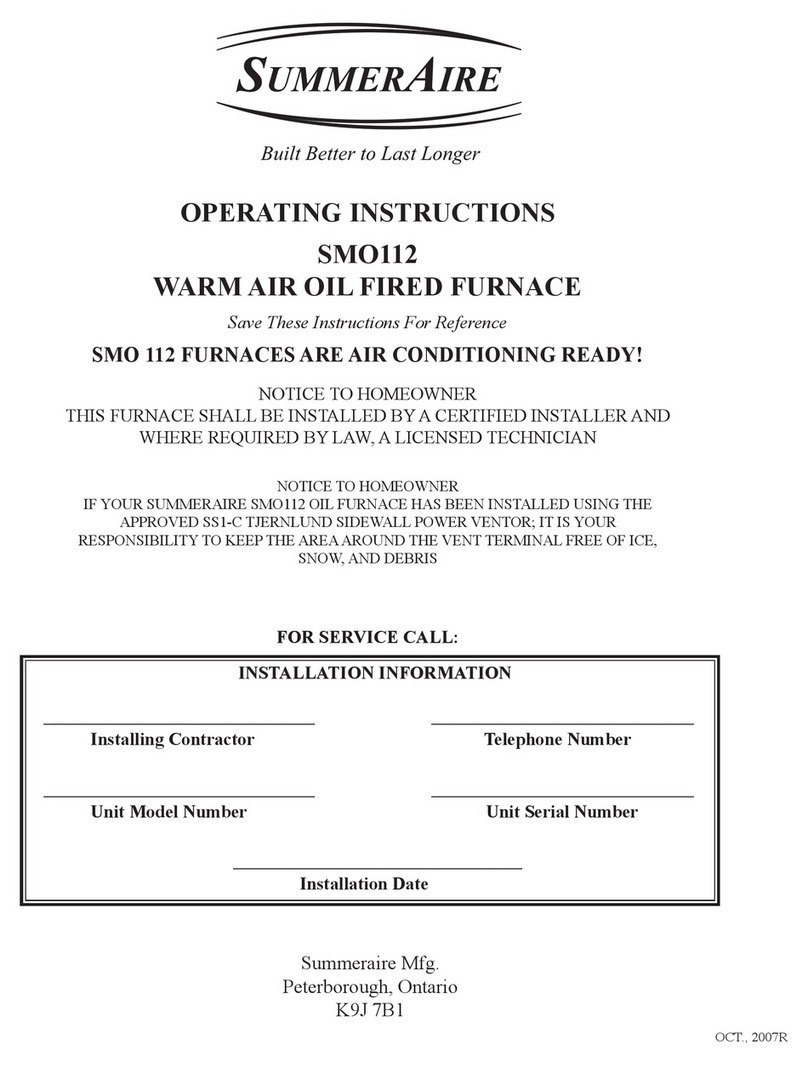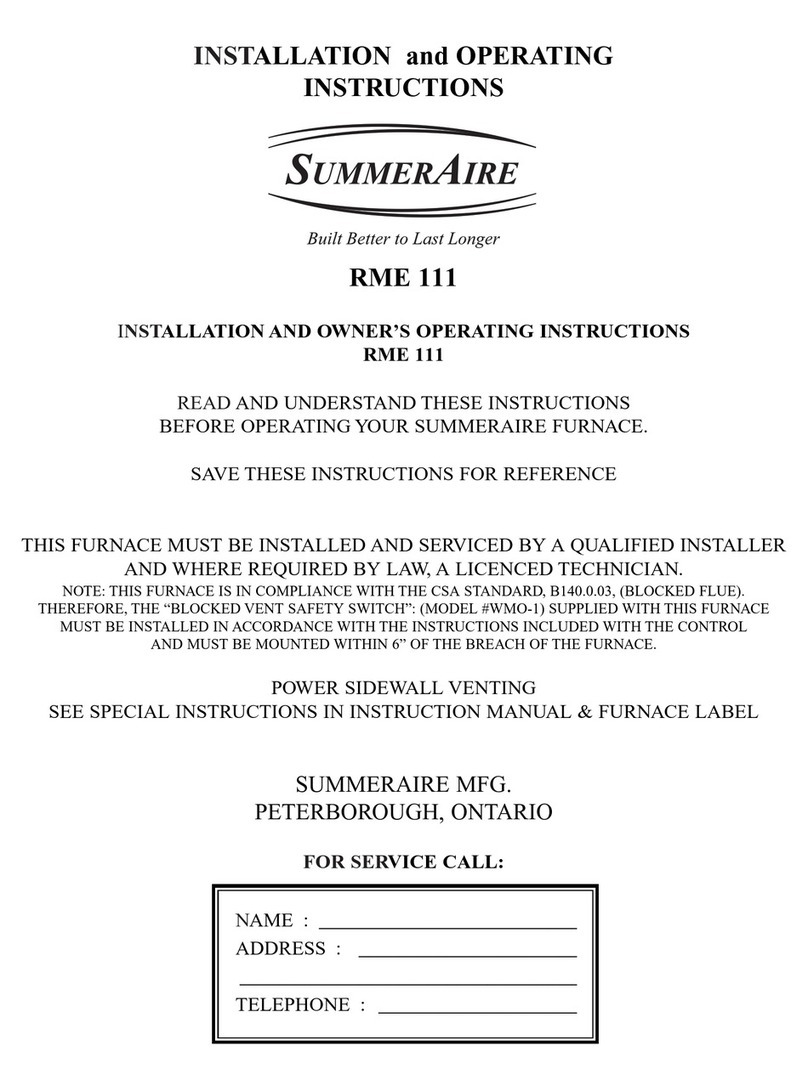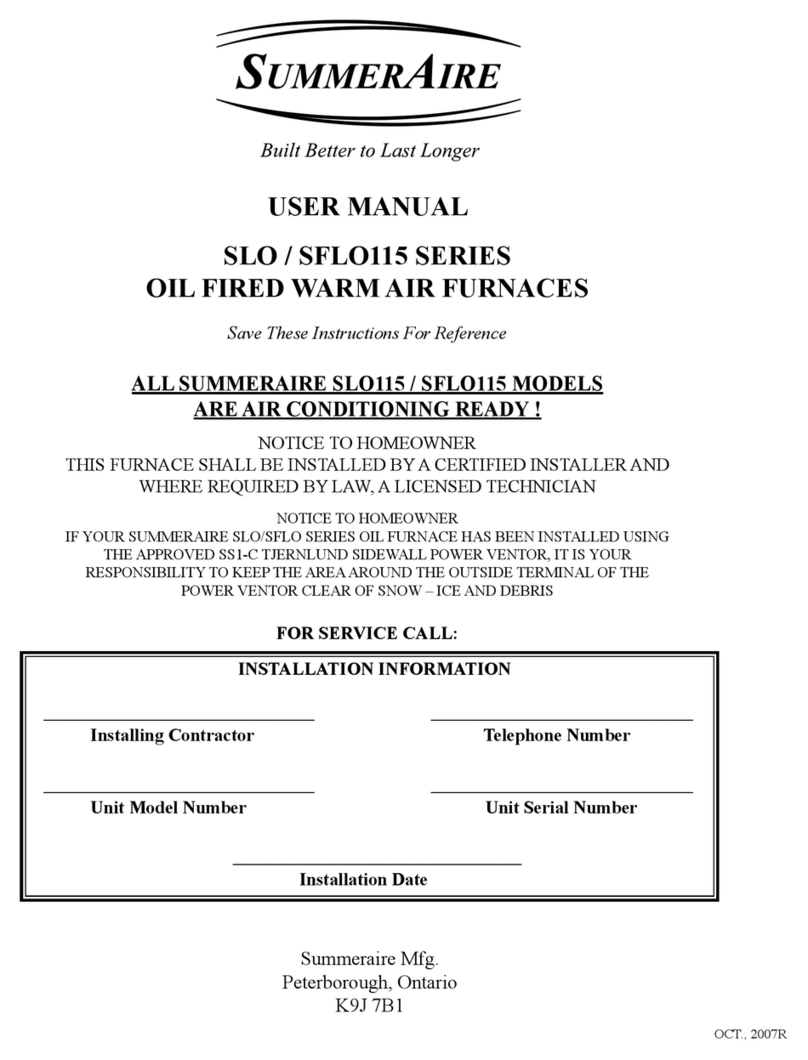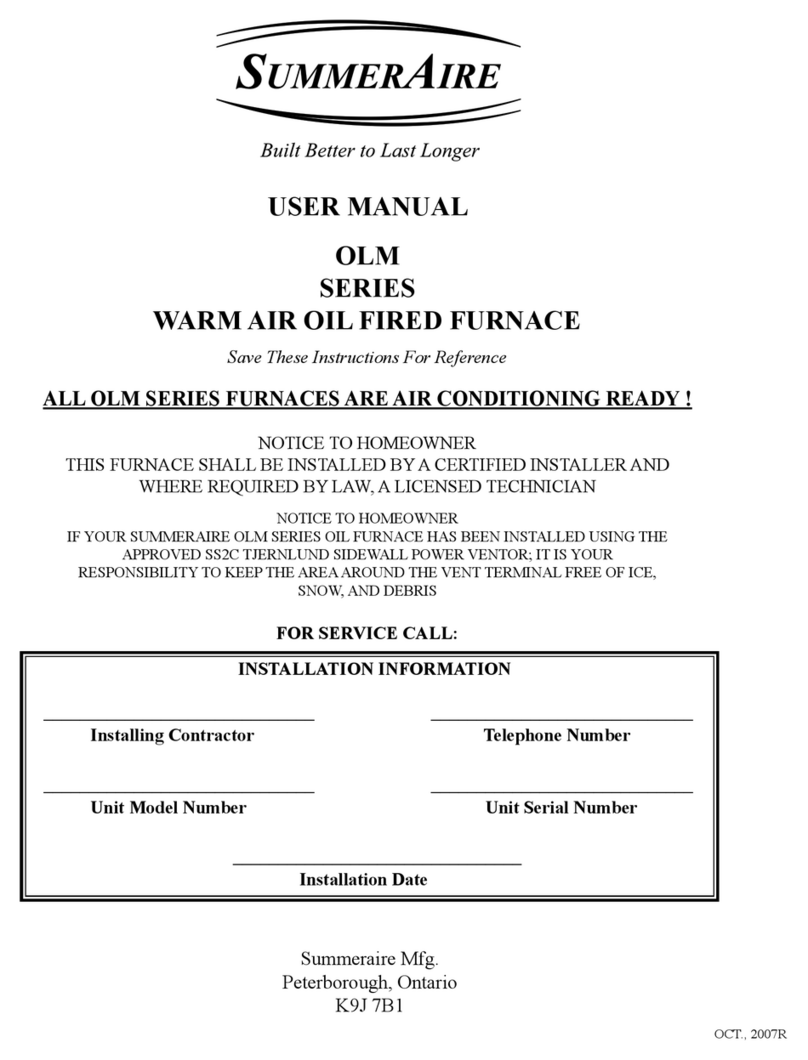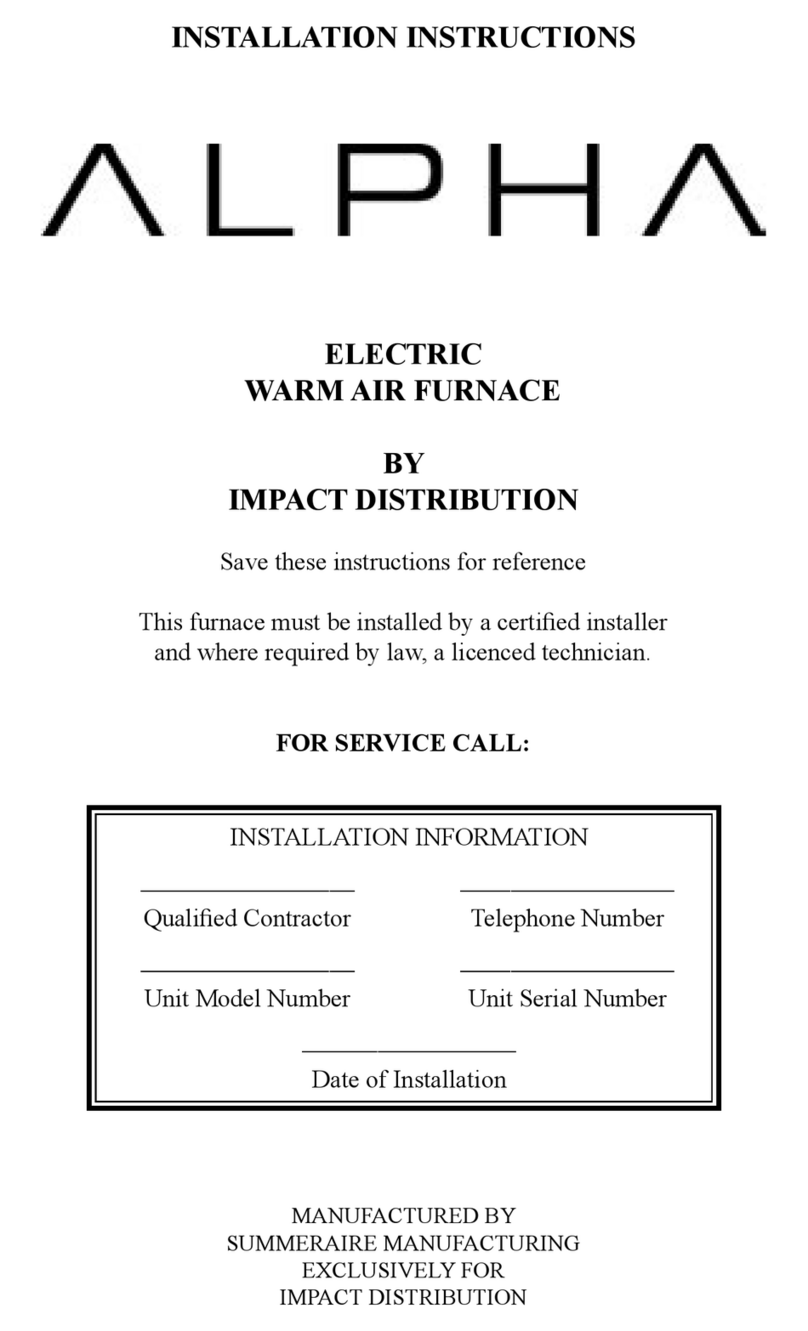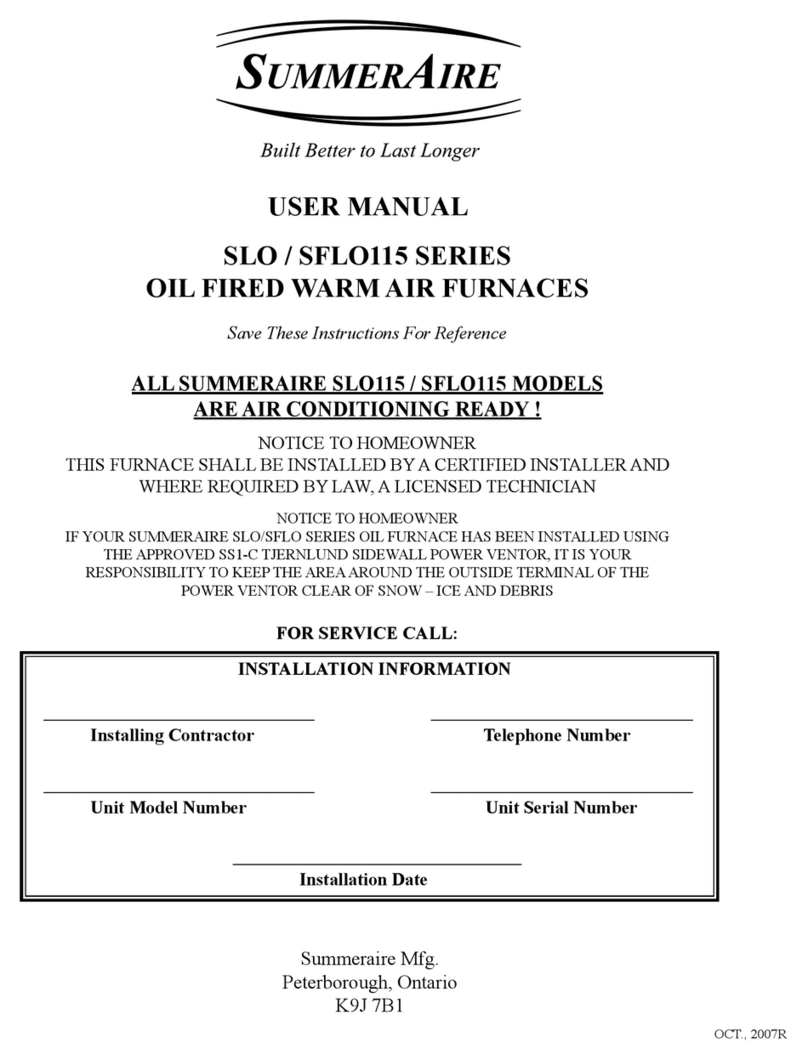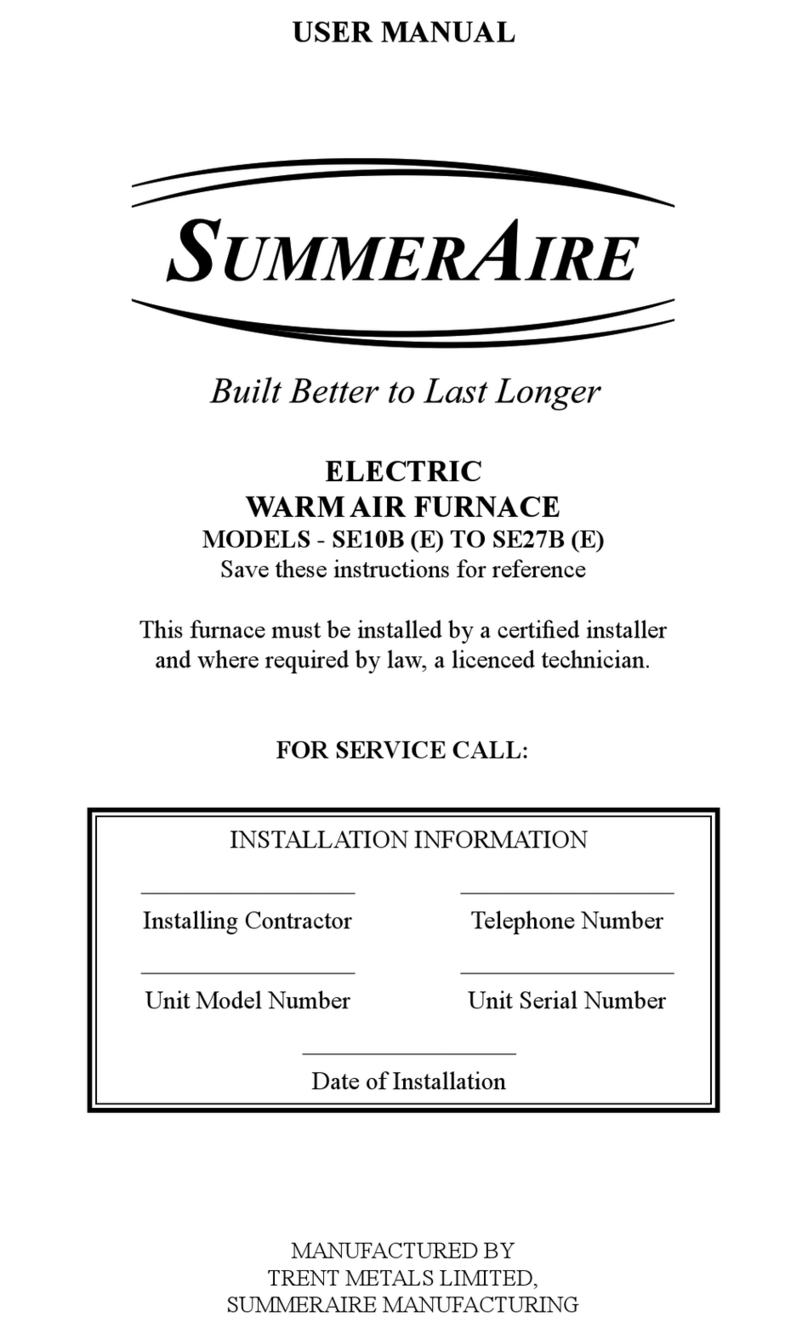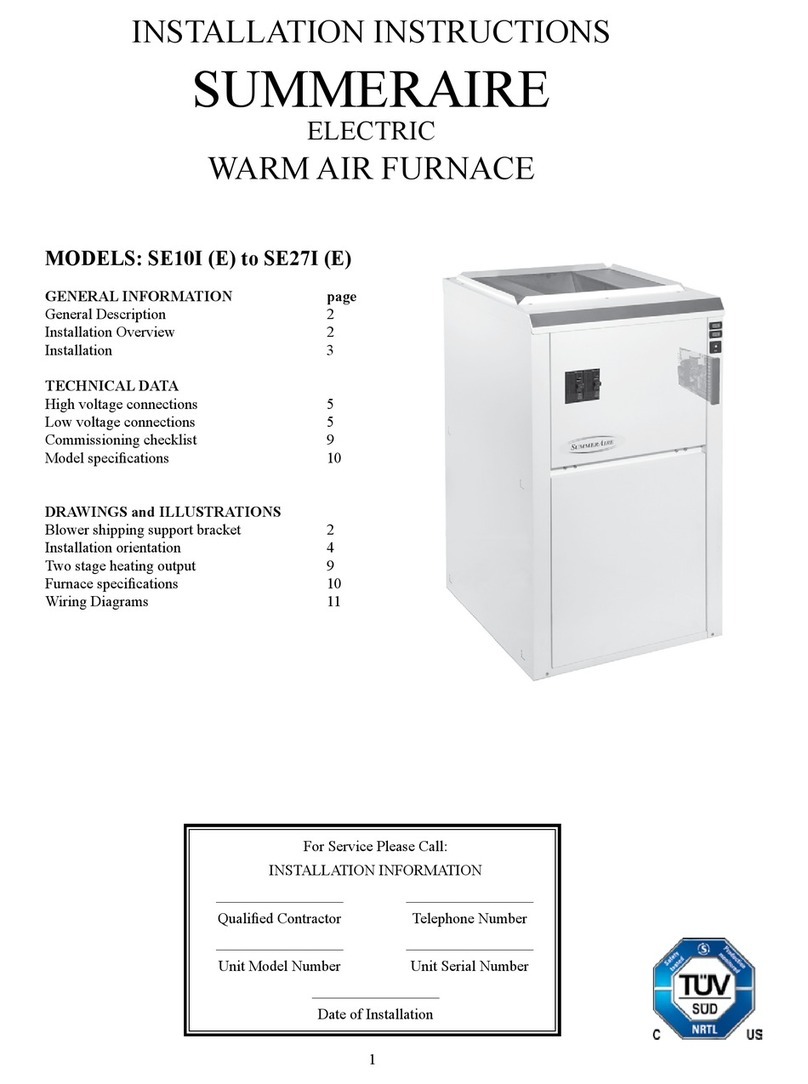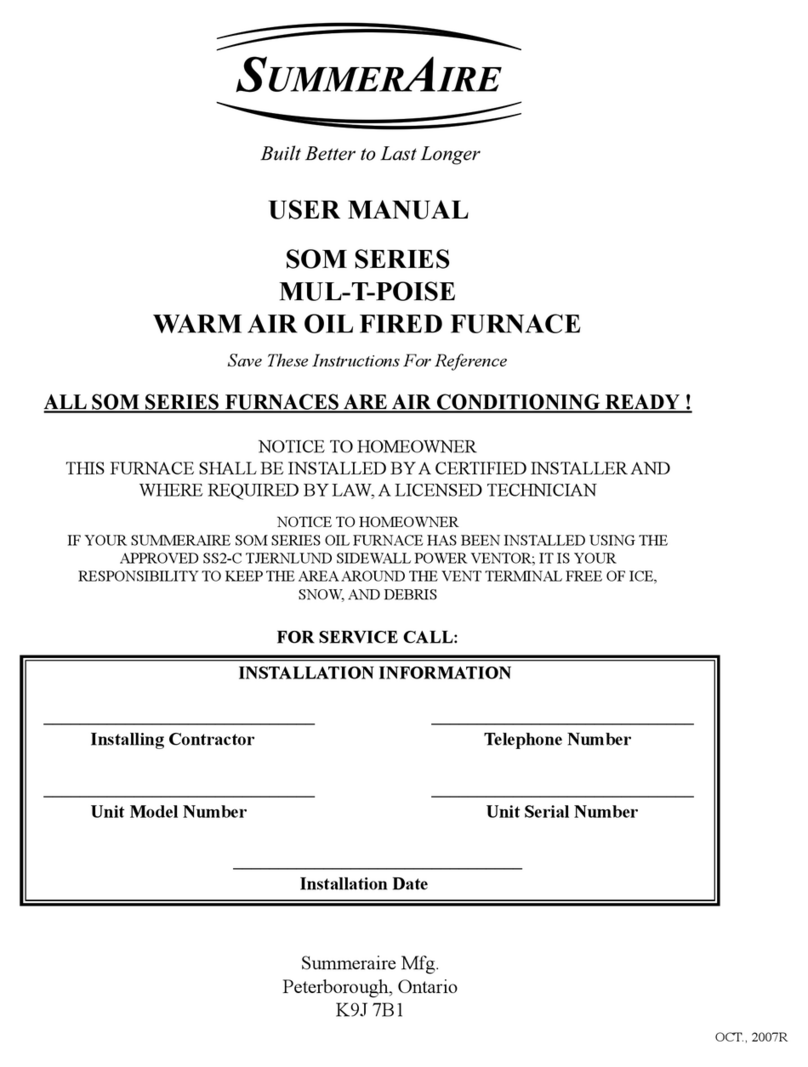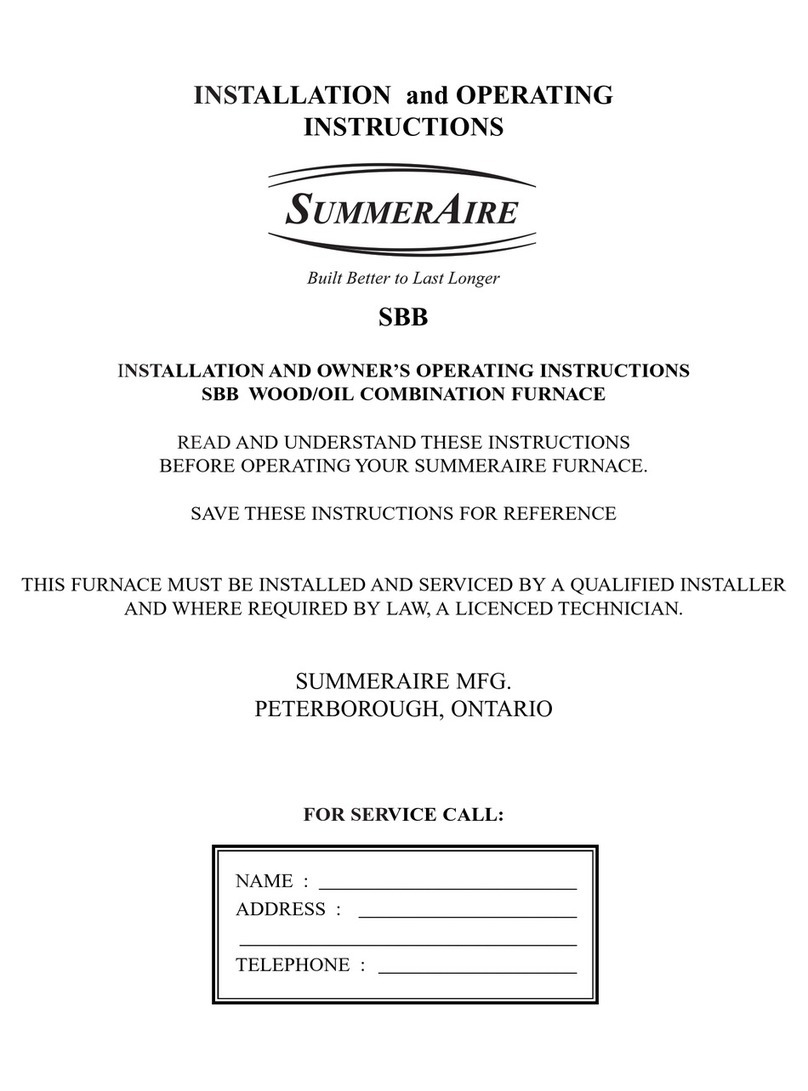Installation of the Combination Furnace
(continued)
Chimney and Flue Pipe
.03 to .05 inches WC at the flue connection of the fur-
nace, and .01 to .03 inches draft over the fire. Maximum
chimney draft should never exceed - 0.03” WC since a
power failure could cause wood or coal fire to burn out
of control.
The flue pipe must be full size and not lighter than No. 24
gauge black iron pipe. The flue pipe connection should
be short and direct with as few elbows as possible and
should slope up toward chimney. Make certain the flue
pipe or thimble does not project into the chimney flue. All
sections of the flue pipe should be fastened with sheet
metal screws. Under no circumstances should the flue
pipe contain a hand-operated damper.
Warning: Do not mount flue pipe close to or in front of
limit and operating controls.
Draft Regulator:
The draft regulator may be located on either the vertical
or horizontal section of the flue pipe. The best location is
18” from the furnace flue outlet. The regulator must be
level (without leaning forward or backward) and the pivot-
ing axis has to be horizontal. Follow instructions for
installation which is supplied with the Draft Regulator.
Thermostats:
Select a location which is representative of the average
house temperature, usually the living room. The thermo-
stats should be mounted on an inside wall, never where
they will be subjected to drafts (warm or cold), above a
radio or television set, or where the sun’s rays or heat
from registers will affect them. See instructions supplied
with the thermostats.
For masonary chimneys consult manufacturers’ tables.
Furnace Assembly:
Set down the heat exchanger. Before assembling the
blower section, assemble motor, adjust the leg for belt
tension. Install blower and motor pulley. Assemble the
motor to the blower section on the motor mounts which
are already in place. Line up pulleys with straight edge by
sliding motor along the track and fix position with bolts.
Install belt - tighten it by adjusting the leg, leaving belt
movement to a maximum of one inch under finger pres-
sure. Install motor wiring harness using push on connec-
tions. NOTE: Green centre wire goes to the ground, two
outside wires on motor leads are interchangeable.
Remove lower spacer panel screws from furnace section.
Assemble the blower section by tilting it, so the flames fit
into the heat exchanger section. Screw both sections
together.
How To Mount The Burner:
The burner is flush mounted with three positioning bolts
on the front plate. Connect the burner conduit cable pro-
vided on the wiring harness - follow wiring diagram.
Check nozzle size, tightness and chamber alignment.
Set up burner to #1 Smoke.
Wiring The Furnace: Drawing #3
Each furnace is supplied with the necessary wiring har-
ness. Follow diagrams for wiring and correct location of
the controls included in these instructions.
All electrical equipment and wiring has to installed follow-
ing the requirements of the Canadian or U.S. electrical
code as well as regulations of local authorities.
Solid Fuel Damper Control: Drawing #1
The thermostat for the solid fuel section activates the
damper control - which in turn moves the damper flap. It
is essential that the damper control is at all time in per-
fect working order.
Note: Adjust damper chain so that damper flap opens no
more than 1/2”.
When oil is used as fuel close all combustion air inlets to
solid fuel side of furnace. Excessive air decreases the oil
burner efficiency.
How To Install Fire Brick: Drawing #2
1. Place bottom row of bricks in fire box. Make sure
bricks are in brick plate support frame which is an
integral part of the box.
2. Repeat second and third rows of brick.
3. Install stainless steel front brick guard using bolts
provided.
4. Install fourth row of brick, sides and back.
5. Install “U” shaped top brick guard, inserting open ends
of guard into loops provided on inside of door opening.
Note: *Due to the taper design of firebox mortar is not
required.
* Grates are shipped installed in furnace.

